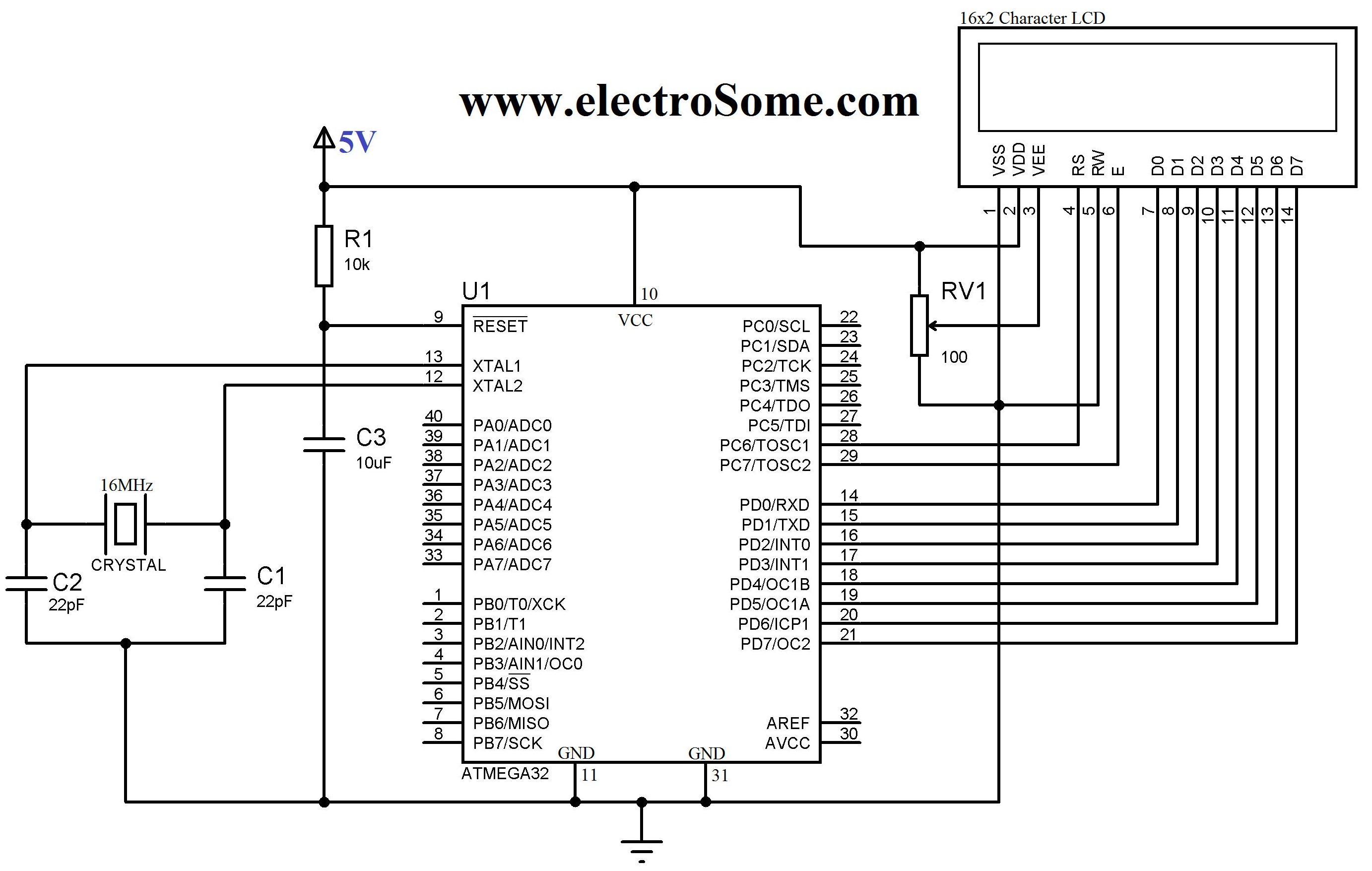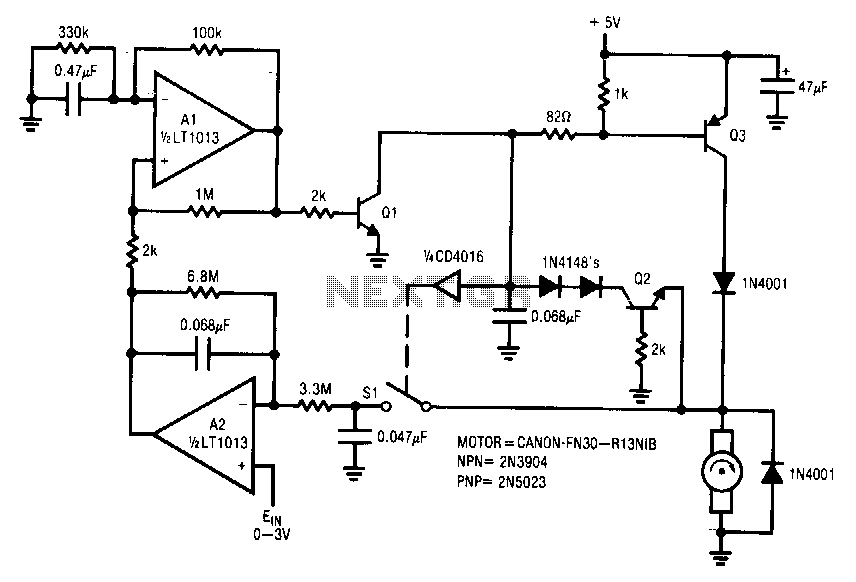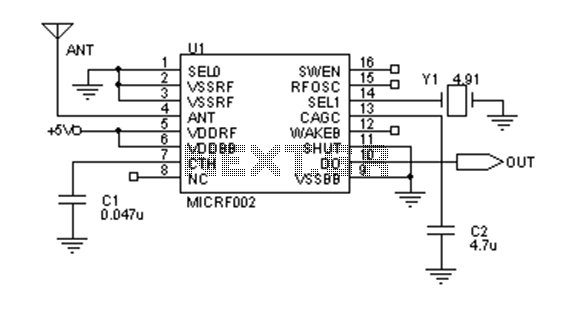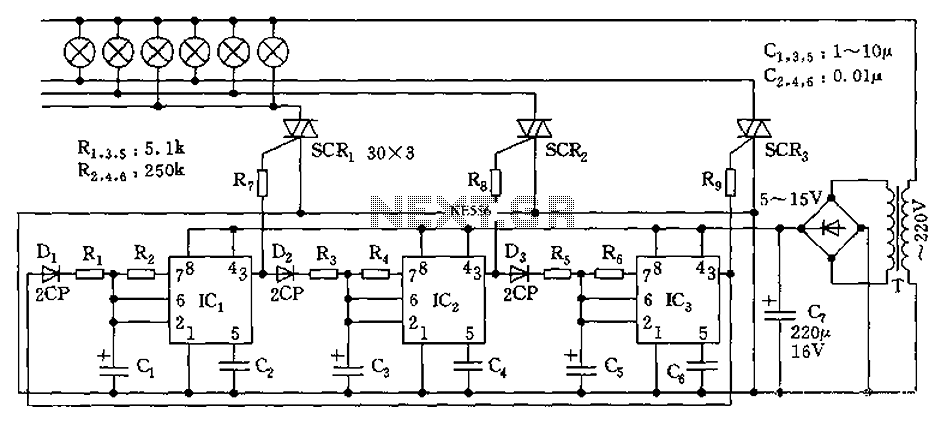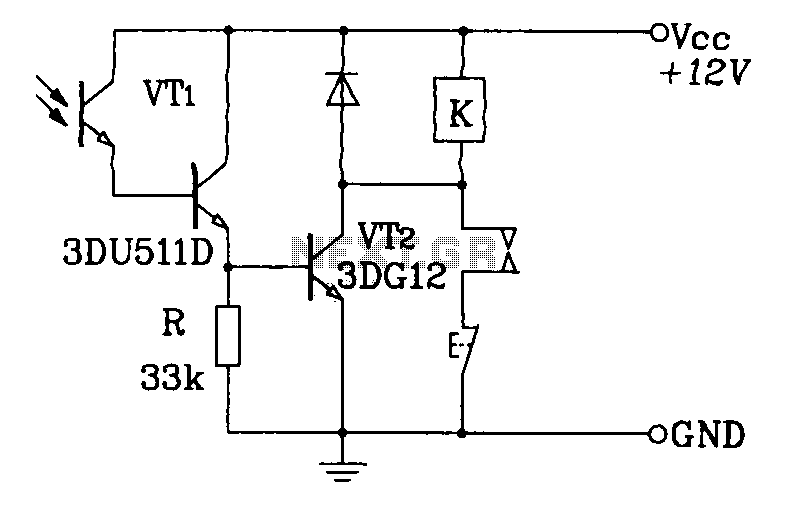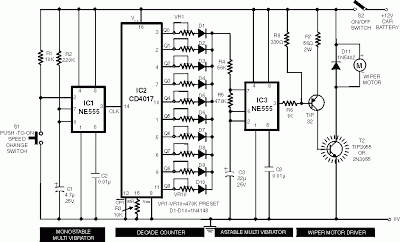
TV STATION CONTROL
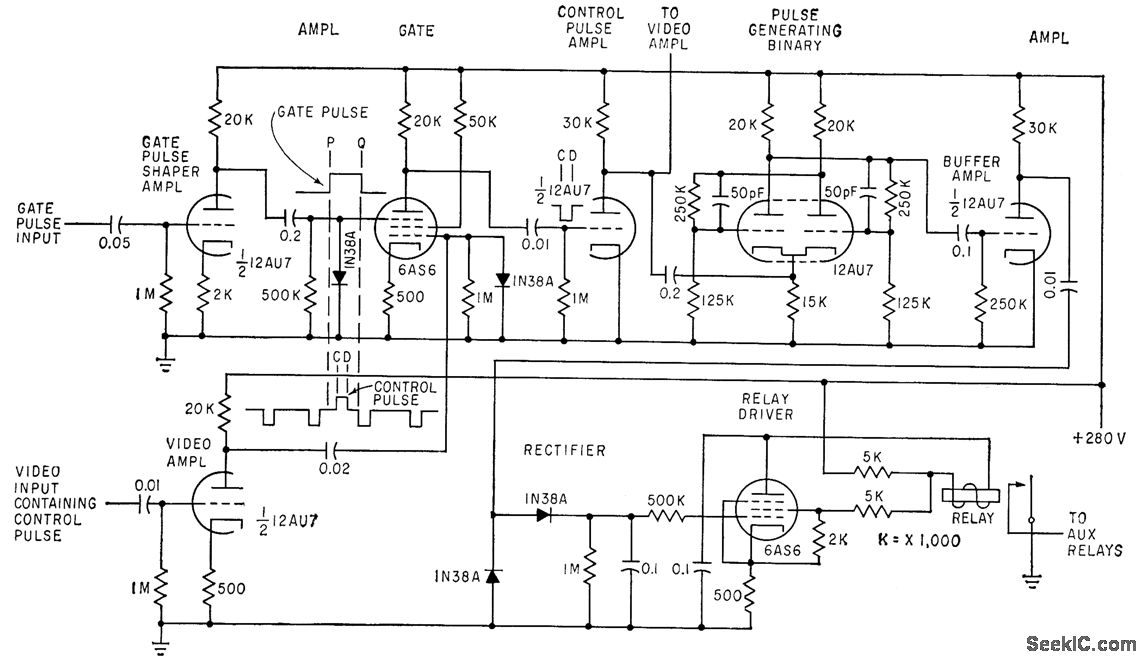
Control pulses transmitted during the blanking interval by a television network transmitter are decoded by receiver circuits and translated into six distinct switching actions. These actions are utilized to introduce special program content, such as commercials, weather reports, and local film projector material, which may vary for each network station.
The described system involves a sophisticated method of utilizing control pulses during the blanking interval of a television signal. The blanking interval is a period when the transmission of visual information is paused, allowing for the synchronization of various components in the television system. During this interval, the transmitter can send control pulses that are not visible to the viewer but are crucial for managing the broadcast content.
Receiver circuits are designed to interpret these control pulses. The decoding process involves the use of specific electronic components, such as demodulators and microcontrollers, which work together to detect and translate the incoming signals. The output of this decoding process results in six different switching actions. Each of these actions corresponds to a distinct command that can trigger specific events in the broadcast, enabling the seamless integration of additional content.
For instance, one switching action might activate a commercial break, while another could display a weather report. This functionality allows network stations to customize their broadcasts, offering tailored content to their audiences. Furthermore, local film projector material can be introduced, enhancing the viewing experience with region-specific programming.
The flexibility and efficiency of this system are critical in modern broadcasting, where timely and relevant content delivery is essential. The ability to utilize blanking interval pulses for content switching not only optimizes the use of air time but also enhances viewer engagement by providing diverse programming options. Overall, this technology represents a significant advancement in the field of television broadcasting, allowing for greater control over the transmitted content.Control pulses transmitted in blanking interval by tv network transmitter are decoded by receiver circuits shown and translated into six different switching actions used to introduce special program matter such as commercials, weather reports, and local film projector material that may be different for each network station. -K. Kazama and T. Ishino , Remote Tv Control by Blanking-Interval Pulses, Electronics, 33:20, p 79-81. 🔗 External reference
The described system involves a sophisticated method of utilizing control pulses during the blanking interval of a television signal. The blanking interval is a period when the transmission of visual information is paused, allowing for the synchronization of various components in the television system. During this interval, the transmitter can send control pulses that are not visible to the viewer but are crucial for managing the broadcast content.
Receiver circuits are designed to interpret these control pulses. The decoding process involves the use of specific electronic components, such as demodulators and microcontrollers, which work together to detect and translate the incoming signals. The output of this decoding process results in six different switching actions. Each of these actions corresponds to a distinct command that can trigger specific events in the broadcast, enabling the seamless integration of additional content.
For instance, one switching action might activate a commercial break, while another could display a weather report. This functionality allows network stations to customize their broadcasts, offering tailored content to their audiences. Furthermore, local film projector material can be introduced, enhancing the viewing experience with region-specific programming.
The flexibility and efficiency of this system are critical in modern broadcasting, where timely and relevant content delivery is essential. The ability to utilize blanking interval pulses for content switching not only optimizes the use of air time but also enhances viewer engagement by providing diverse programming options. Overall, this technology represents a significant advancement in the field of television broadcasting, allowing for greater control over the transmitted content.Control pulses transmitted in blanking interval by tv network transmitter are decoded by receiver circuits shown and translated into six different switching actions used to introduce special program matter such as commercials, weather reports, and local film projector material that may be different for each network station. -K. Kazama and T. Ishino , Remote Tv Control by Blanking-Interval Pulses, Electronics, 33:20, p 79-81. 🔗 External reference
